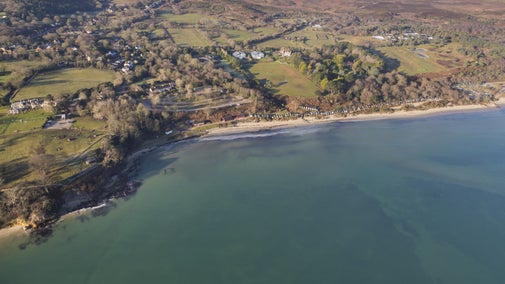5 Sept 2025
Update from project manager, Kelly Marshall
Work begins on 8 September on the final phase of our five-year project to remove failing coastal defences from Middle Beach, Studland. This will allow the area to realign into a natural sandy cove and precious wildlife habitat.
This crucial work is a direct response to the effects of coastal erosion, accelerated by climate change, which saw cliffs fall by up to four metres in a single night. We have gradually been moving structures from the beach, including the former café, shop and toilets, as they came under threat of erosion. Our long-term vision is to allow the cove to realign naturally, creating a coastline more resilient to future environmental challenges.
What does the work involve?
The last stage in this long process is removing the boulders and gabions (wire baskets filled with stone) which are no longer effective against the rising tides. They are also collapsing and pose a risk to the public. As well as the gabions, it involves removing the concrete slipway. Taking out these defences won’t pose any threat to dwellings or other permanent buildings.
More beach to enjoy
Holding the cliff in place with a hard structure like gabion baskets means that the shoreline is not naturally aligned with the coast. When waves hit the gabions, they bounce off and cause erosion of the sand in front of the defences. Over time, this has caused the beach to be submerged by the tide most of the time making it inaccessible.
Removing the artificial structures will allow the beach to replenish itself using sandy material from the cliff. Over time, it’s predicted that this will result in the formation of a sandy cove, with more beach for people to enjoy (see artist's impression, right). The effects might look extreme at first, but projections show that the cliff will realign to become a gentler slope.
Enhanced habitat
We believe that removing the sea defences will also enhance the habitat for wildlife. The increased areas of open sand will benefit insects and reptiles, including rare sand lizards and smooth snakes.
In preparation for the works, licenced ecologists moved reptiles from the site to an adjacent area. An exclusion zone was built around the site to prevent the reptiles from returning until works are completed. In addition, rangers built artificial hibernacula (underground chambers) where the reptiles can shelter for the winter.
Work programme
The work is scheduled from 8 September to 30 October, during which time the beach area will be closed for public safety. However, visitors can still access the car park, toilets and popular Sandy Salt Pig café.






